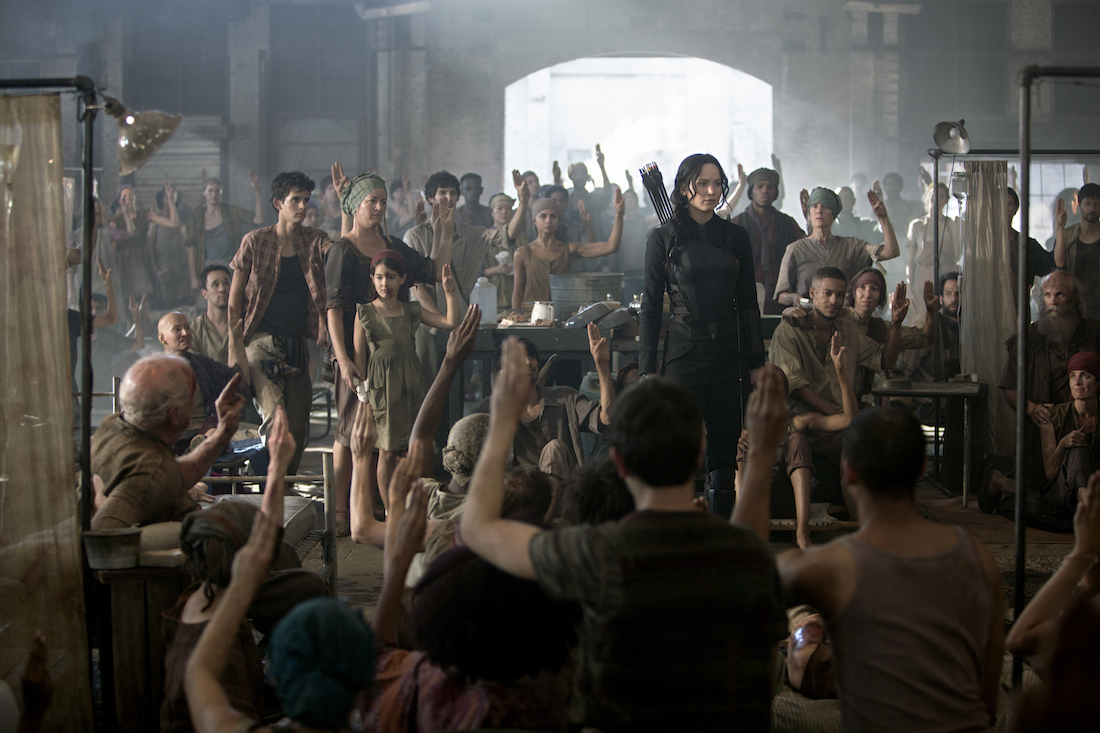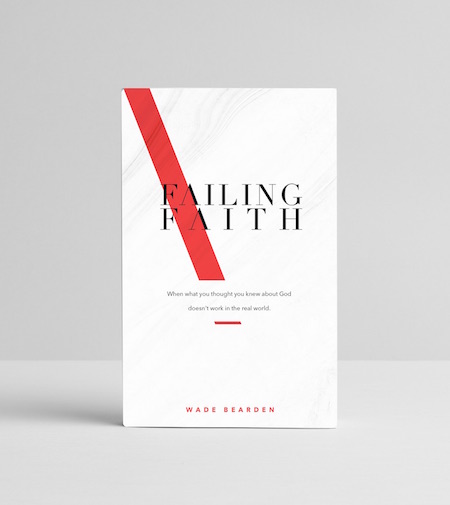
Much like the stereotype in an average fairy tale film, Katniss Everdeen gets a makeover in Mockingjay – Part 1. Her long, slightly frizzed hair is weaved into a trademark single braid. Makeup is applied. She wears a black combat suit in the vein of Christopher Nolan’s Dark Knight. Yet, in contrast with most stories involving princesses and magical outward transformations, Katniss’ new style doesn’t help her blend in with the bar set by society. The image of her glamorized figure is juxtaposed with the dirty, ruffled edges of war. She looks out of place among the wounded. Her outfit doesn’t match the rubble she walks through.
Mockingjay, the third film in the Hunger Games franchise, is largely successful (and important) because it examines the way we tend to soften and glamorize both violence and power. In a sense, Mockingjay is an anti-fairy tale narrative, with Katniss being our atypical princess. What’s the moral of the story? No one truly lives happily ever after—at least not in this world.
Mockingjay – Part 1 picks up at the heels of Catching Fire. Katniss has recently been extracted from the arena and sent away to the once fabled kingdom of District 13. District 12, Katniss‘ home, has been destroyed and her on-again, off-again boyfriend, Peeta, is a prisoner of President Snow.
Katniss is left struggling with her new, post-arena role. The leaders of District 13, Alma Coin (Julianne Moore) and Plutarch Heavensbee (Philip Seymour Hoffman), hope to use The Girl on Fire as a propaganda tool against the Capitol. But Katniss doesn’t feel like much of a hero. Reeling from her time in the Games, Katniss is vulnerable, empty, and guilt-ridden. It’s only after she sees Peeta, now under President Snow’s control, that Katniss reluctantly agrees to become the “Mockingjay”—a symbol of rebellion to the other districts.
While the story is lethargic and incomplete in places, Mockingjay is still a very good film, both thematically and in the way it crafts its characters. While last year’s Catching Fire dealt primarily with morality inside the Games, Mockingjay – Part 1 wrestles with the ethical dilemmas one faces outside of battle. Jennifer Lawrence is the master embodiment of a warrior struggling with PSAD (Post Traumatic Arena Disorder). You can take Katniss out of the arena, but it is much harder to take the arena out of Katniss (Her mentor, Haymitch, is another great example of this too).
While her violence during the Games is justified, it comes with a price tag. Here, Mockingjay attempts to transcend a simple “winner” and “loser” category. In battle, there are only losers and less-losers. Katniss has cheated death twice, but with each escape comes an extra burden to carry. She has reoccurring nightmares. Her attractive face is permanently chiseled with a look of pain and regret.

Katniss is a hero because she has no desire to be a hero. “I never wanted any of this, I never wanted to be in the Games,” she says during the film. “I just wanted to save my sister and keep Peeta alive.” Her mission isn’t one of power, wealth, or fame; it’s of love. With a film industry still reluctant to give us a strong, female superhero (at least one with her own movie), Katniss is one of the better heroines in recent young adult memory. She’s not perfect, but she thinks for herself (certainly the opposite of a damsel in distress). She can’t stand to see her loved ones hurting and sacrifices to keep them safe. Katniss carries the scars of violence in a way that seems to embody an individual who is broken for others.
In one of the most powerful, haunting scenes of the film, Katniss sings The Hanging Tree. In one verse, she speaks of an individual calling his lover to death:
Are you, Are you
Coming to the tree
Where the dead man called out for his love to flee
Strange things did happen here
No stranger would it be
If we met up at midnight in the hanging tree
Here, Katniss contemplates a strong desire to escape this fallen world. What are we to do when death seems easier than life; when our worlds will never be like they once were?
Life isn’t always a fairy tale, sometimes winning means first losing something (or someone) we love. Even among the “good people” of District 13, we get the sense that Katniss is still a pawn of sorts. She is a commodity to a specific end. Katniss seems to know this deep down. She realizes that despite her role as a glamorized soldier, war is nothing like she makes it out to be.
These themes are why I appreciate The Hunger Games franchise. Some cite it for its exaltation of bloodshed. As I’ve mentioned previously though, the fact that we are uncomfortable with the violence reveals the true intent of the story. The filmmakers (as well as the books) want us to feel this way. The push us to explore the personal beliefs regarding our own “arena.”
Because, if we’re not careful, we too can glamorize violence. We do this in movies, through the articles we share on Facebook, and so on. Yes, violence is justifiable at times, but it comes with a cost. Not just for the one who is struck, but also for the one who is striking
When parents ask me if they should let their children watch The Hunger Games, I try to answer them on a case by case basis. There are certainly portions that are not child-friendly. I’m quick to point out, however, that the films aren’t merely violent for the sake of being violent. There is much that we, and our students, can learn from the franchise; from Katniss and her struggle as an icon of war. More than most female-driven stories, especially titles filled with princes and princesses, Katniss is someone we can learn from.
The tagline of Mockingjay – Part 1 says, “The courage of one will change the world.” After watching the film, I think it would be more appropriate to say, “The courage of one, who sees beyond violence and revenge, will change the world.” Does the cinematic version of Katniss end up doing this? I have my thoughts, but we’ll have to wait until next year to know for certain.




